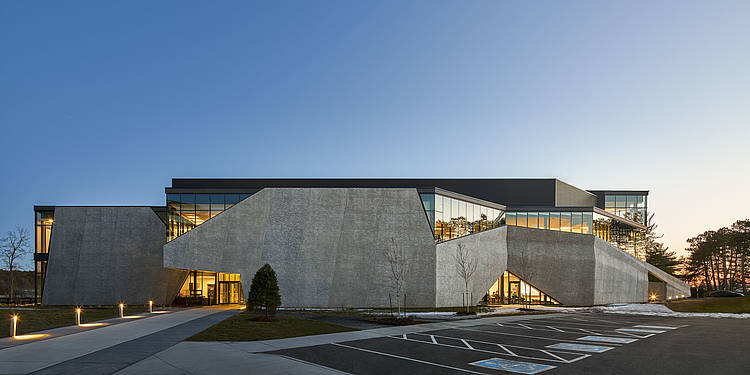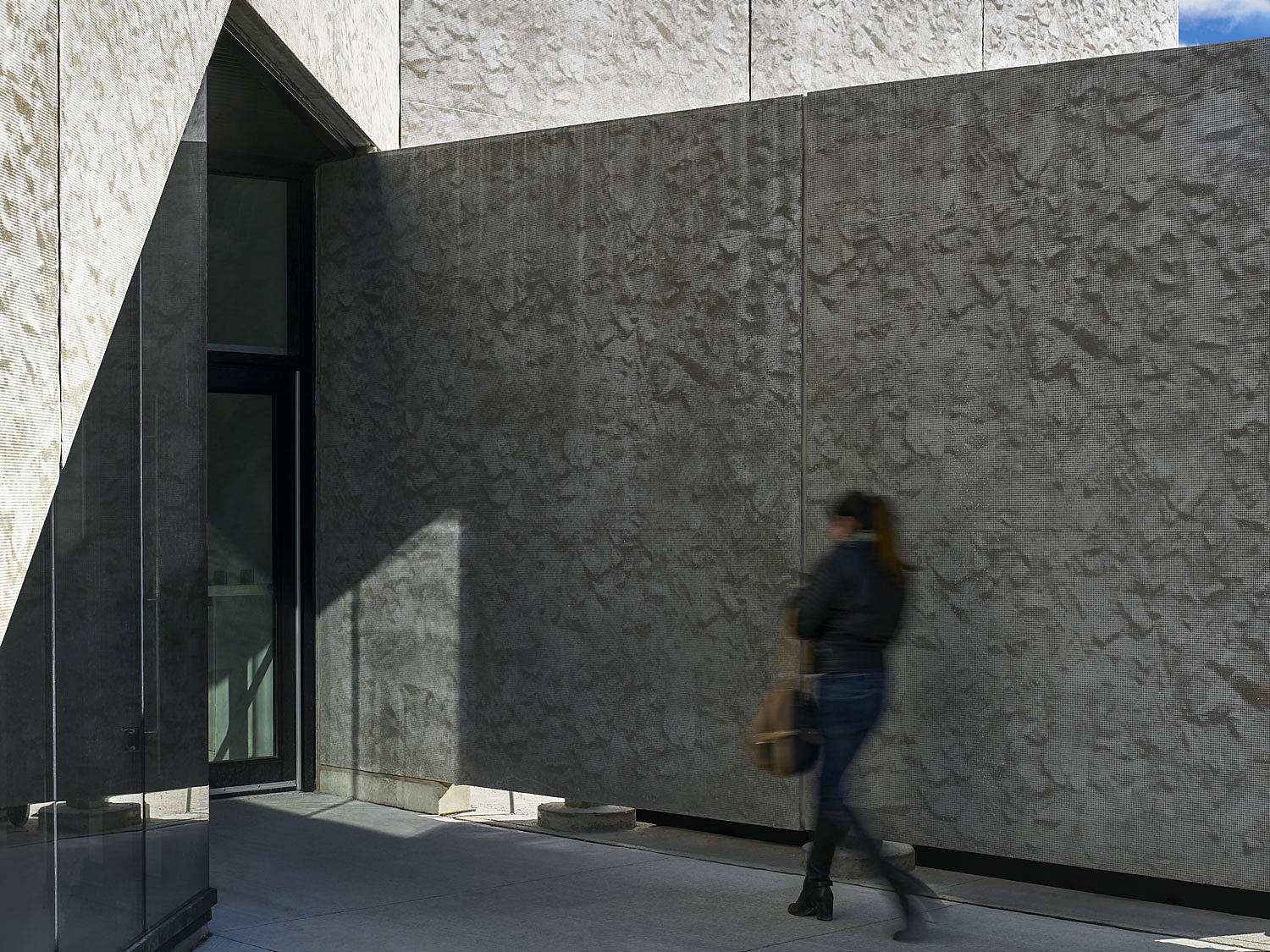Trent University, Peterborough, Canada
Picturesquely set on the river, Trent University’s new student center offers great views out over the green campus. RECKLI’s artico® neo photo process turns the concrete façade into a mirror reflecting the historic university buildings around it.
Cram for exams with views over the water and the coniferous forest: the new student center building at Trent University in Canada offers students an extraordinarily lovely learning environment. The architecture doesn’t just connect them with nature, but also with one another.
Canadian firm Teeple Architects designed the building as a crossing of two paths: the main entrance connects the building with the bus stop at the campus’ main entrance, while a second entrance joins up with the footpath along the riverbank. Both axes meet like an X in the building. “The forum is a multi-height gathering space from which all activities of the building are visible together with a breathtaking panorama of the river”, say the architects of their design. The student center was designed with exterior and interior spaces, so that students can work and relax outside on mild days.
With a long wall of big windows on the water-side, the back of the building is embraced in prefab concrete elements that follow dynamic lines as they vary in height. Behind this, windows keep the view of the building’s interior free. From afar, the concrete façade gives the impression of a very raw surface. Upon closer inspection, one realizes that the concrete surface is smooth. The artico® neo process was used to create this special look. “Its unique photo-etched precast concrete exterior finish was created from an image of the original rough aggregate concrete used in the campus’ iconic historic buildings, which, in conjunction with wood roof detailing, serves to connect to the architecture of the original campus”, say the architects.

To this end, the planners took several photos of the façade details on existing buildings, then used RECKLI’s artico® neo process to apply them to the concrete. artico® neo is a plastic foil coated with a concrete deactivator. The chemical affects the speed at which the concrete binds and dries, so the treated surfaces can be washed away after hardening, allowing the motif to show in the concrete surface.
RECKLI’s American subsidiary US Formliner printed the photos provided by the architects onto 257 artico® neo sheets measuring 2.7m x 1.2m. Rather than ink or paint, a surface retarder is printed onto the film. The artico® neo films were then placed into the forms and glued in place at the prefab plant to prevent them from slipping as the concrete was poured. Once the concrete had hardened, the elements were taken out and the film removed. The concrete surface was then washed with a pressure washer. During this process, the top layer was washed away at the areas treated with surface retarder. After washing, the design was visible on the concrete surface; the concrete elements were ready to be mounted to the façade.
artico® neo guarantees artistic effects that are visible in any combination of light and shadow, so it is suitable for use on interiors as well as exteriors. The concrete façade on this new university building rose to the architects’ expectations, creating an optical connection to the historic buildings while interpreting them in a modern way.
